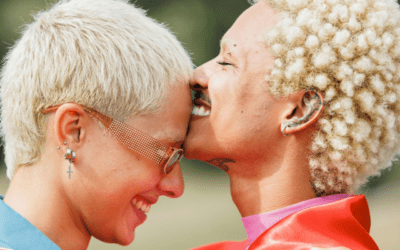Gender identity is a fundamental aspect of the human experience, and to understand it we have to look beyond conventional notions associated with birth sex, chromosomes, or romantic or sexual attraction. Most Western societies have a binary concept of gender identity, but human nature is not limited to restrictive binarisms; instead it has a rich diversity of gender identities. In this article, we want to clarify some concepts about gender identity to help eliminate certain labels and stigmas.
Difference between gender identity and sex
Gender identity, on the other hand, is the internal and individual experience of gender, which may or may not correspond to the sex assigned at birth. Gender identity is therefore not predetermined by birth sex or chromosomes. This means that individuals can identify with a gender other than that assigned at birth, highlighting the independence between biology and gender experience.
It is essential to understand that gender identity is diverse and is not limited to traditional, binary expectations of male and female.
Clarifying concepts
Transsexuality
Trans person
Non-binary person
Gender expression
This is the way we present ourselves to the world and we want to be recognised by the way we look, speak, dress, talk, play, and so on.
Sexual orientation
Respect, inclusion and normalisation for all gender identities
Each person has a unique experience of their gender identity. Some people identify with the gender they were assigned at birth, while others explore and discover identities that do not conform to those expectations. Speaking in a safe and supportive environment enables us to better understand those around us and ourselves.
Promoting understanding of these diverse identities is fundamental to building an inclusive and respectful society that normalises different gender identities and sexual orientation. By recognising and accepting the multiplicity of genders, we help create environments where everyone can express themselves authentically, freely and without fear of being misunderstood.
The key to fostering a society that celebrates diversity in all its forms lies in education and awareness-raising. Accurate and accessible information helps to debunk misconceptions and build bridges of understanding.
How to support a child in understanding their gender identity
It’s crucial for a child to feel safe and supported while exploring their gender identity. Here are some ways you can provide support during this process:
- Listen and validate their feelings: It’s important for the child to feel heard and understood. If a child expresses feelings or doubts about their gender identity, listen without judgment.
- Educate yourself: Learn about gender identity to better understand what your child is experiencing. You can find resources, read books, or consult with professionals who specialize in gender and child development. IM GENDER offers resources for families that can be very helpful.
- Create an inclusive environment: Encourage an environment where all gender expressions are respected, both at home and at school.
- Respect their gender identity: If the child expresses a gender identity different from the one assigned at birth, respect it. Use their preferred pronouns and name to help them feel more comfortable expressing their gender.
- Support their emotional well-being: Discovering gender identity can be a complex process, so it’s important for the child to know they have your unconditional support. Consider seeking support from a mental health professional specializing in gender identity.
- Practice an open communication: Create a space for open dialogue where the child feels safe to ask questions and share their concerns. It’s important for them to know they can turn to you at any time to talk about their feelings.
- Protect against discrimination: Ensure the child is protected from any form of discrimination or harassment at school, at home, or elsewhere. Promote inclusive policies and work with teachers and other parents to create a safer environment for all children.

Do you have a clearer understanding of what gender identity is? If you still have questions, you can consult more resources about gender, as well as better understand the reality of transgender people and their families on our website.




